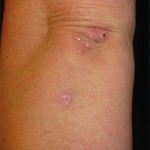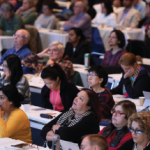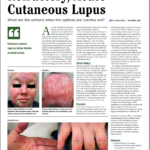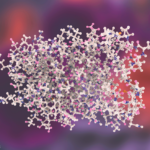Dr. Kang noted that clinicians must be aware of unusual presentations and complications of CLE. He shared the story of a patient whose clinical presentation of acute CLE mimicked that of SJS/TEN, a condition in which patients may experience wide areas of sheet-like skin and mucosal loss. To distinguish between the two diseases, Dr. Kang noted that SJS/TEN-like acute CLE tends to have a slower progression, less mucosal involvement, more significant alopecia and less full epidermal necrosis on histology than SJS/TEN.
Another entity that clinicians may be unaware of is subacute panniculitis‐like T cell lymphoma (SPTCL), a rare cytotoxic primary cutaneous lymphoma that can be challenging to differentiate from lupus erythematosus panniculitis and may occur in patients with SLE. Although indolent cases of SPTCL can be treated with agents, such as systemic corticosteroids, methotrexate, retinoids, cyclosporine and mycophenolate mofetil. Chemotherapy is indicated for more aggressive disease that behaves like gamma–delta T cell lymphoma.3
Treatment
The treatment paradigm that Dr. Kang employs for CLE begins with photoprotection, smoking cessation and topical therapies. The next step in treatment is anti-malarials, followed by disease-modifying anti-rheumatic drugs, such as methotrexate, mycophenolate mofetil and azathioprine.
If patients continue to experience active disease, then lenalidomide or thalidomide can be prescribed. Thereafter, the treatment options include belimumab, tacrolimus or intravenous immunoglobulin (IVIG).
Additionally, evidence exists to support the use of anifrolumab—a human monoclonal antibody to type I interferon receptor subunit 1 that is approved by the U.S. Food & Drug Administration for the treatment of lupus—for the treatment of cutaneous disease. In a study, Chasset et al. enrolled 11 patients with SLE with biopsy-proved, active CLE who had failed at least three currently available medications. These patients were treated with 300 mg of intravenous anifrolumab every four weeks. The study’s primary outcome of CLASI-A 50 (i.e., proportion of partial response at week 16, defined by a decrease of CLE Disease Area and Severity Index activity of at least 50%) was achieved in all patients. A complete response was observed in six of the 11 patients.4
Based on this and other data, Dr. Kang will consider the use of anifrolumab, early—immediately following the failure of anti-malarial therapy in certain patients.
Dermatomyositis
Dr. Kang stated that differentiation of dermatomyositis from CLE depends wholly on clinical context. Doctors must pay attention to the location and distribution of rash and recognize that it is possible for the two conditions to co-occur in the same patient.



